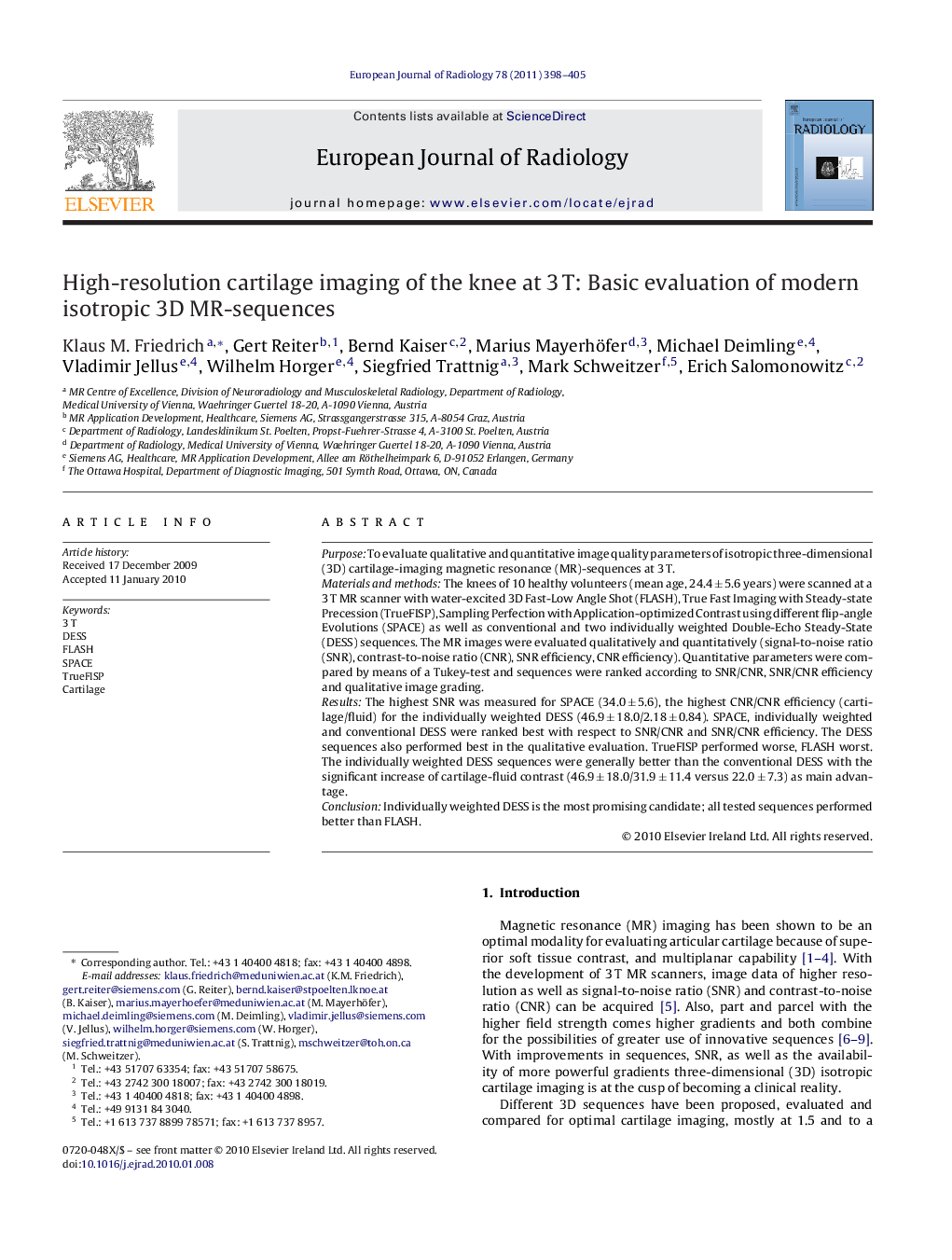| Article ID | Journal | Published Year | Pages | File Type |
|---|---|---|---|---|
| 4226325 | European Journal of Radiology | 2011 | 8 Pages |
PurposeTo evaluate qualitative and quantitative image quality parameters of isotropic three-dimensional (3D) cartilage-imaging magnetic resonance (MR)-sequences at 3 T.Materials and methodsThe knees of 10 healthy volunteers (mean age, 24.4 ± 5.6 years) were scanned at a 3 T MR scanner with water-excited 3D Fast-Low Angle Shot (FLASH), True Fast Imaging with Steady-state Precession (TrueFISP), Sampling Perfection with Application-optimized Contrast using different flip-angle Evolutions (SPACE) as well as conventional and two individually weighted Double-Echo Steady-State (DESS) sequences. The MR images were evaluated qualitatively and quantitatively (signal-to-noise ratio (SNR), contrast-to-noise ratio (CNR), SNR efficiency, CNR efficiency). Quantitative parameters were compared by means of a Tukey-test and sequences were ranked according to SNR/CNR, SNR/CNR efficiency and qualitative image grading.ResultsThe highest SNR was measured for SPACE (34.0 ± 5.6), the highest CNR/CNR efficiency (cartilage/fluid) for the individually weighted DESS (46.9 ± 18.0/2.18 ± 0.84). SPACE, individually weighted and conventional DESS were ranked best with respect to SNR/CNR and SNR/CNR efficiency. The DESS sequences also performed best in the qualitative evaluation. TrueFISP performed worse, FLASH worst. The individually weighted DESS sequences were generally better than the conventional DESS with the significant increase of cartilage-fluid contrast (46.9 ± 18.0/31.9 ± 11.4 versus 22.0 ± 7.3) as main advantage.ConclusionIndividually weighted DESS is the most promising candidate; all tested sequences performed better than FLASH.
